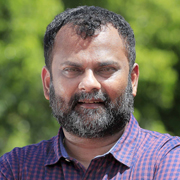At IAM, Bhadauria reiterates IAF’s commitment to put doctors back into cockpit

Mail This Article
Bengaluru: The much-awaited move to get Indian Air Force (IAF) doctors back in the cockpit is inching closer to reality. At the Institute of Aerospace Medicine (IAM) here, Chief of Air Staff Air Chief Marshal R K S Bhadauria reiterated IAF’s commitment to resurrect the ‘flying doctor’ concept, part of the Pilot-Physician Programme (PPP).
Addressing the 59th annual conference of the Indian Society of Aerospace Medicine (ISAM) at IAM recently, Air Chief Marshal Bhadauria spoke about the need to get medical professionals of the IAF back into the cockpit.
The practice discontinued in 1971, will now probably be back, with experts voicing the need to have flying doctors to meet the needs of the changing times.
“Very soon, hopefully we will have this programme going, where medical officers will be taken in for full training on fighters, transport fleet and helicopters. This will provide you a big opportunity,” Air Chief Marshal Bhadauria said.
This year’s ISAM event, held under Covid-19 protocols, saw experts deliberating upon a range of topics including aerospace physiology, clinical and operational aerospace medicine, manned space mission and civil aviation medicine, to name a few.
The IAF Chief said that when medical officers get into the cockpit, they will understand the changed scenario and the needs of modern military flying.
Emphasizing on the need to bring the concept of flying doctors back, he said: “We used to have it a couple of decades back and it was very useful. For some reason maybe we thought we had probably learnt enough. Today when you undertake long combat missions, the situation is totally different. From 45 minutes to a one-hour mission two decades back, we have moved into regular 2-3 hour combat missions and training. That is how wars will be fought today,” Air Chief Marshal Bhadauria said.
With long duration missions becoming more common, with some even going beyond 10 hours, the IAF top brass want to put in place measures to address the needs of pilots, through inputs from the medical fraternity.
“There is a need to interact and there is a need to understand the cockpit. Our shift in philosophy would happen only when you (medical officers) see it upfront and see it yourself. This teamwork I think will go a long way in not only revising our methodology, but coming out with new processes and new ways of tackling situations,” he said.
The IAF Chief opined that doctors would soon get in-depth operational experience when they start flying on IAF assets on a regular basis.
“When you join this team, you are in not only as a pilot in this field but you will be in as a full operational pilot for all tasks that are conducted and you will be a part of the team that will fly across,” he added.
Keeping in mind India’s Human Space Programme (HSP) Gaganyaan, the IAF Chief urged his colleagues at IAM to lock on to future space programmes along with the Aircraft and Systems Testing Establishment (ASTE).
“A lot of things were done in a hurry this time because we were running out of time. For the future this is one area that needs to be kind of institutionalized for design and development and for follow-up,” he said.
The IAF Chief said that the four astronauts-select currently undergoing training in Russia were doing extremely well.
He also added that aviation medical specialists, flight test crew and support crew from IAM and ASTE will be playing critical roles in all future space programmes.
On the much-discussed topic of sleep deprivation among aircrew at ISAM events every year, the IAF Chief felt that the more the issue is debated, the better the solutions that would emerge.
“Last year we ensured that we posted aviation medicine doctors to every single combat squadron and thereafter we have taken up other important flying squadrons too. These are measures that will change the game. We have to be open about how we are going to handle these issues,” he said.
Air Chief Marshal Bhadauria said that with fast-changing technology, the support system in the aircraft, the cockpit, and the understanding of aviation medicine too has undergone rapid changes.
“A lot can be done in terms of medicine and flying. In the years ahead, we need to get the crew back not only as early as possible, but find ways and means of administering medicine and continuing to fly, especially when there are twin cockpit operations,” he added.
The concept of flying doctors goes back a long time. Aviation history points towards John Jeffries, an American physician who had his first voyage in a hot-air balloon with his balloonist friend in November 1784. Later, in 1911, Lt Luigi Falchi, an Italian medical officer, was the first acclaimed military pilot-physician to have flown a heavier-than-air aircraft.
A senior IAF official told Onmanorama that the ‘flying doctor’ will be able to give solutions to aeromedical safety concerns with both new aircraft and old aircraft.
“The US Navy was resorting to incorrect usage of oxygen systems in F-18s, which was leading to fainting spells in the air. They suspected a tech problem. But it took extensive flying by a flying doctor to realise that it was faulty usage of the oxygen system that was creating the problem,” the official said.
(The writer is an independent aerospace and defence journalist, who blogs at Tarmak007 and tweets @writetake.)


